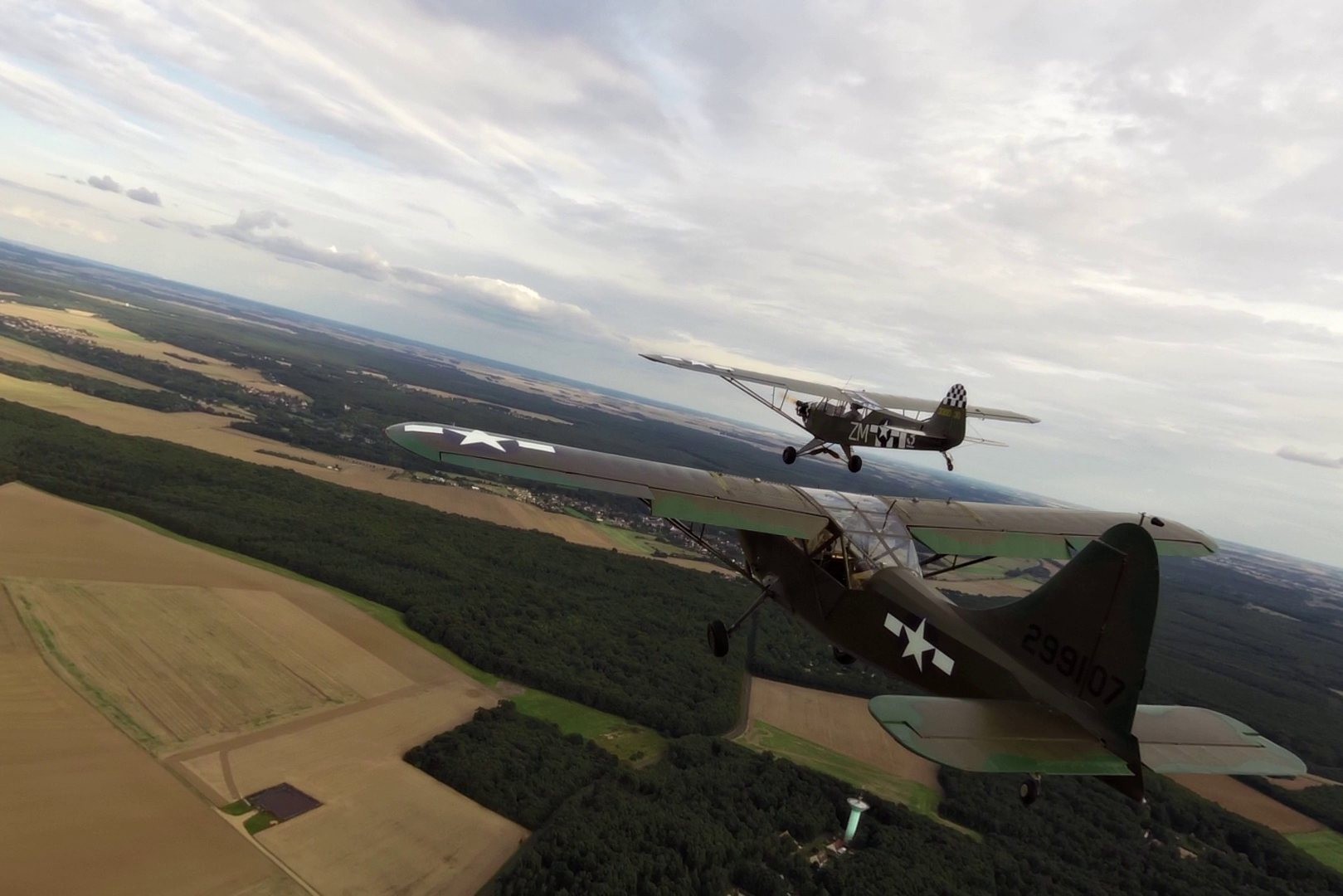StaggerWing D17S
The Beech D17 Staggerwing was Walter Beech’s brainchild. Its first sketch dates back to 1933: the 650 hp Beech A17. A veritable cartoon plane, its features were refined with each successive version until the D17, the best known, appeared in 1938. At the time, it sold for a staggering $18,100 without a radio, the equivalent of three luxury detached houses. In 1945, its price was equivalent to two and a half times the price of the Bonanza for identical performance.

From admirals' aircraft to business aviation
During the war, the “Stagg”, as it was known, served as a liaison aircraft for admirals and generals.
In June 2024, the Staggerwing, F-AZJP, will celebrate its 80th birthday. Built in June 1944 for the US Navy, it did not survive the war and was stored at a Navy base in California. Sold to private owners in 1945, it spent around twenty years in Mexico in the hands of pilots who flew for wealthy businessmen. In the 1960s, it returned to Los Angeles for restoration. For the next twenty-five years, it was flown by a TWA pilot, Verne Hongola.
Convoyage des Etats-Unis vers la France
During the war, the “Stagg”, as it was known, served as a liaison aircraft for admirals and generals.
In June 2024, the Staggerwing, F-AZJP, will celebrate its 80th birthday. Built in June 1944 for the US Navy, it did not survive the war and was stored at a Navy base in California. Sold to private owners in 1945, it spent around twenty years in Mexico in the hands of pilots who flew for wealthy businessmen. In the 1960s, it returned to Los Angeles for restoration. For the next twenty-five years, it was flown by a TWA pilot, Verne Hongola.
Outstanding performances
The Staggerwing is, first and foremost, a typically American aircraft: a vast, wide cabin for 5 people and a supercharged engine. A Pratt & Whitney 450 hp, 16 litre engine, “dependable engines” as the eagle on the badge under the propeller proudly proclaims. Oversized, since in March 1934 the C17 version was equipped with a Jacobs of only 225 hp.
The Staggerwing had original aerodynamic characteristics.
It is one of the only biplanes in history with retractable landing gear. Its speed differential is colossal. It stalls at 60 mph (52 kt) and crosses at 180 mph (156 kt).
It gets its name from its staggered wings (Staggerwing). The lower wing is forward, the upper wing further back. This is the opposite of conventional biplanes. As a result, the top wing stalls smoothly, well after the bottom wing. The reason for this is the airflow between the two wings, which logically accelerates (Venturi effect).
80 years old in June 2024
Now operated by the Ham and Jam association, which keeps it in perfect flying condition, the Staggerwing F-AZJP takes part in public and private events, both in flight and on the ground.
Please contact us for any request








